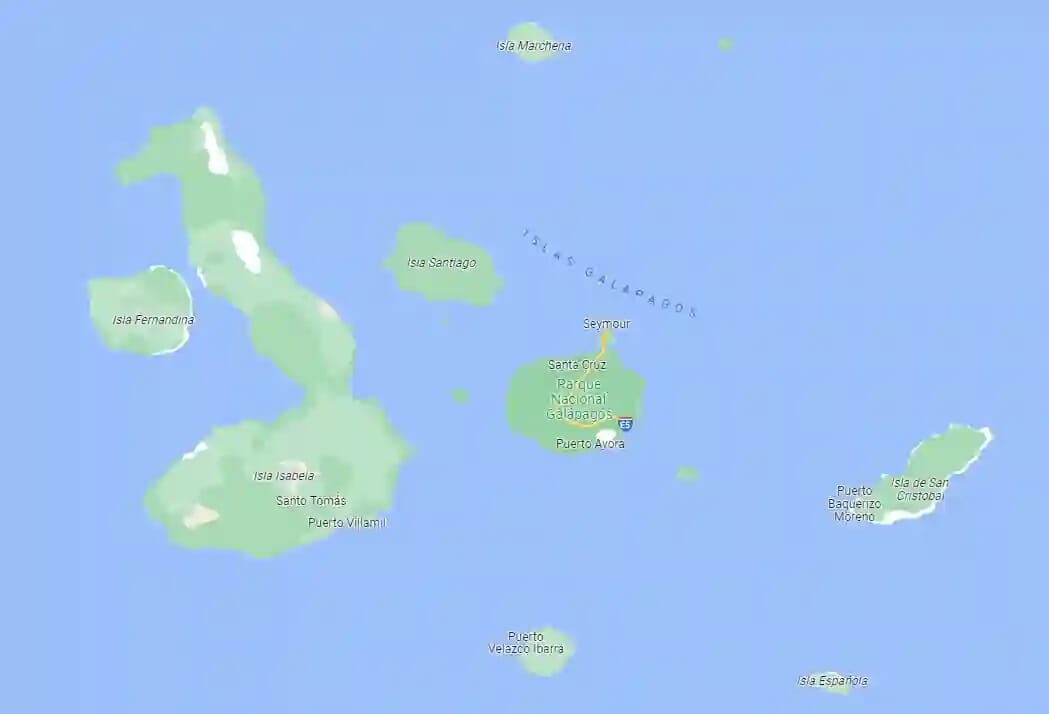The Galápagos Islands, an iconic archipelago, are located in the Pacific Ocean, approximately 600 miles (1,000 kilometers) west of mainland Ecuador. The islands are situated on the equator, making them part of the region known as the "Galápagos Province," which falls under Ecuadorian jurisdiction. These islands hold immense significance due to their unique ecological and geological features, as well as their historical connection to Charles Darwin's theory of evolution.

The archipelago consists of 19 main islands, several smaller islets, and numerous rock formations that have emerged over millions of years due to volcanic activity. The Galápagos Islands are situated at the intersection of several tectonic plates, making them a hotspot for volcanic activity. This geologically dynamic environment has contributed to the diverse landscapes found across the islands, from barren volcanic terrain to lush highland forests.
The Galápagos Islands are renowned for their rich biodiversity and unique wildlife, much of which is found nowhere else on Earth. One of the key factors that contribute to this exceptional biodiversity is the islands' isolation. The volcanic archipelago's remote location allowed for the evolution of distinct species over time, resulting in a remarkable array of endemic plants and animals. It was this extraordinary variation that captured the attention of the young naturalist Charles Darwin during his voyage aboard the HMS Beagle in the 1830s.
Darwin's observations of the Galápagos Islands played a pivotal role in the development of his theory of evolution by natural selection. The unique adaptations of different species on various islands illustrated how environmental conditions led to gradual changes and ultimately the emergence of new species. This groundbreaking theory transformed our understanding of the natural world and has since become a cornerstone of modern biology.
The Galápagos Islands are a protected UNESCO World Heritage Site and a national park of Ecuador. This status reflects their ecological significance and the efforts made to preserve their fragile ecosystems. The islands' isolation has allowed many species to thrive without the pressures of predators and competitors that exist in other environments. For instance, the giant tortoises of the Galápagos are one of the most iconic species in the archipelago, with different species residing on various islands.
Each island's unique combination of terrain, climate, and vegetation has given rise to a remarkable diversity of animal and plant life. Marine iguanas, flightless cormorants, blue-footed boobies, and Galápagos penguins are just a few examples of the distinctive wildlife that can be found on these islands. The isolation of these species has led to unusual adaptations and behaviors, contributing to the fascination that these islands hold for scientists and visitors alike.
Tourism in the Galápagos Islands is carefully managed to prevent negative impacts on the fragile ecosystems. The Ecuadorian government enforces strict guidelines to ensure that the environment and wildlife are protected while allowing visitors to experience the islands' beauty and uniqueness. Activities such as snorkeling, diving, hiking, and wildlife observation provide opportunities to engage with the islands' extraordinary natural wonders.
In recent years, the Galápagos Islands have also faced challenges related to human activity and environmental conservation. Invasive species brought by human activity, such as rats and introduced plant species, pose a threat to native flora and fauna. Additionally, the effects of climate change, including rising sea levels and warming ocean temperatures, have raised concerns about the future of the islands' ecosystems.
Conservation efforts are ongoing to address these challenges. The Galápagos National Park Directorate and various research organizations work to restore and protect the islands' unique habitats and species. These efforts include eradicating invasive species, monitoring wildlife populations, and researching the impacts of climate change on the islands' ecosystems.
In conclusion, the Galápagos Islands stand as a testament to the intricate relationship between geography, biology, and the environment. Situated in the Pacific Ocean off the coast of Ecuador, these islands have captivated the imagination of scientists, adventurers, and nature enthusiasts for centuries. From their role in shaping Darwin's theory of evolution to their modern-day significance in ecological conservation, the Galápagos Islands continue to provide insights into the complexities of the natural world and the need to protect its delicate balance for future generations.




